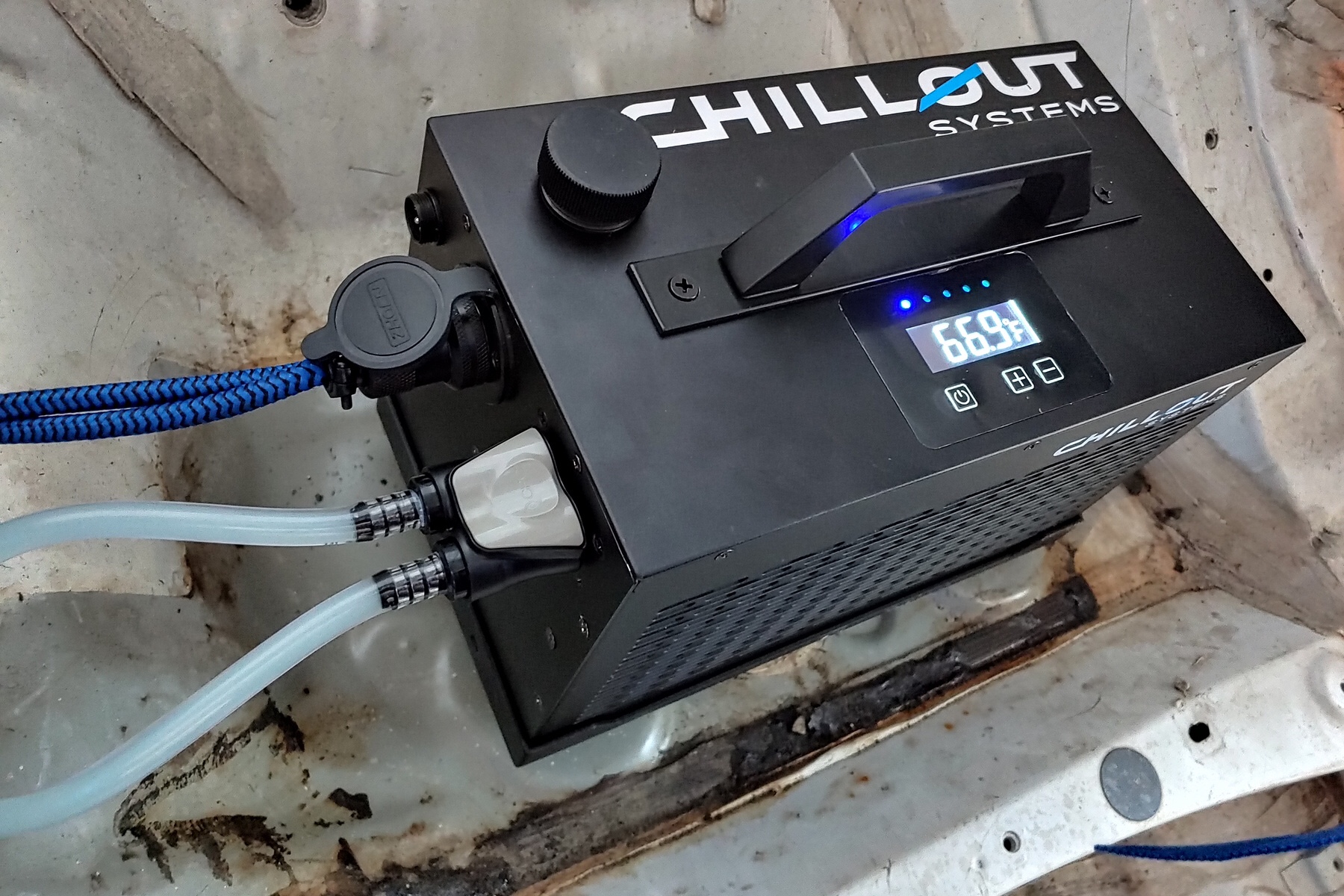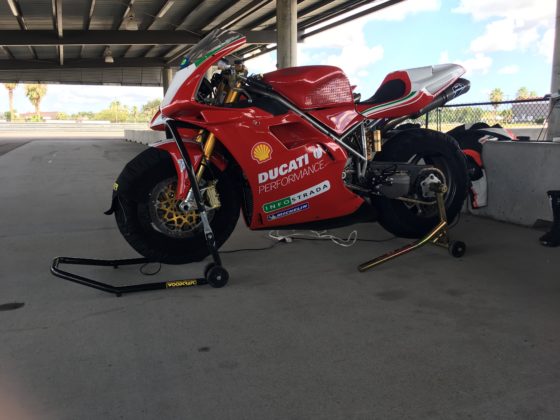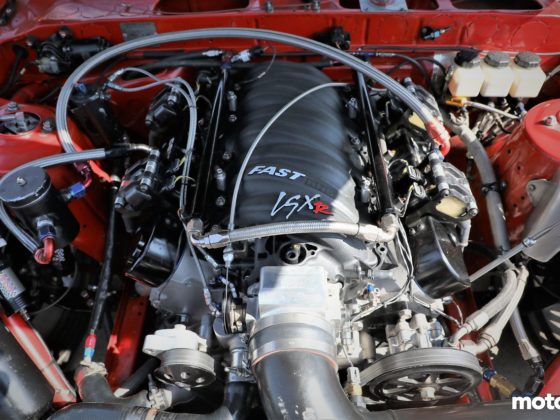
I told you I had no idea what I was doing. Well, maybe a little bit. I did realize that this hole was going to be a problem and I made extra special sure and careful to not drill through the brake line. I actually put a brake pad in between the brake line and the floor pan. I’d rather destroy a drill bit than a hard line!
But hard lines bend and you can see the clamp in the background attaching it to the chassis. We will clean this up momentarily.

You can see the large vent area on the “front” of the Quantum Cooler. The system could be left like this, and it would be good enough. In a hot race car on a hot day, you might lose some efficiency, but it would still work. However, it’s not a big deal to add some duct work to ensure that the system has cooler air passing across it to enhance its efficiency.

As I said earlier in the article, I was in a little bit of a hurry to get the system installed. I did my best to move the brake line out of the way, and then I took some thick rubber hose and cut it down the middle, wrapped it around the brake line, and zip tied it on. This now provides some protection for the line from the bolt. As soon as I get an option during the off season I will make this a little neater.
Let’s take a moment to talk hardware, though. Think about what the Quantum Cooler is — it’s a missile.
A what?
Yes, a missile. Just like everything else in the cabin of a race car during a crash. When things going very fast are suddenly asked to stop going very fast, they don’t usually want to comply. So, if they’re not securely attached, they will rip from their moorings and keep going very fast.
The Quantum Cooler only has 4 little bolts holding it to the chassis. The bolts themselves have a great deal of shear and pull strength. They likely won’t fail in a crash. But what will fail is the thin metal that makes up the floor pan. As you can see here I have used large fender washers underneath the floor. In this way, when the force of a crash causes the cooler to continue moving in one direction, it will “pull” on the mounting bolts. Those bolts will pull on the nuts, and those nuts are blocked by the larger fender washers, which then distribute the force more broadly into the sheet metal of the floor pan.
If you used tiny regular washers, or, worse, no washers at all, it’s likely that the nuts would just rip right through the floor pan and the cooler would go flying. Yes, the cooler only weighs 11lbs plus the weight of the liquid. 11lbs of solid block moving at 100+ MPH is going to really be a problem if you are between said flying block and wherever it wants to go.
I also used nylon locking nuts to help ensure that the vibration and harshness of race car life doesn’t cause these to back out and allow the cooler to go flying. Make sure you are regularly checking things like this as part of your race car maintenance routine.
You do have a maintenance routine right? After every event? Oh, so you’re that guy who realizes something is wrong when it breaks at the track? Thanks. How about not being that guy.
Or girl.
Or non-binary being that doesn’t identify as human.
Whatever.




1 comment
That’s cool, but not $2500 cool. Damn! The collective sum of all my winter upgrades will come in comfortably south of that. Hopefully the price comes down as the tech matures.